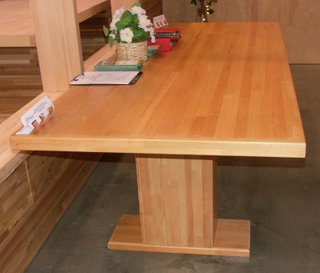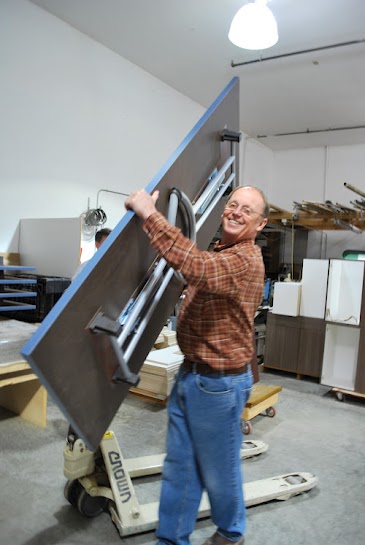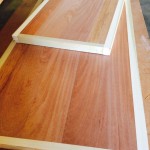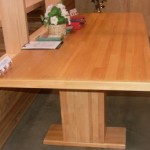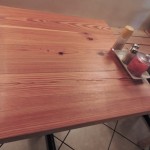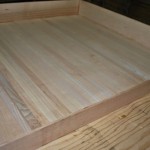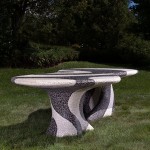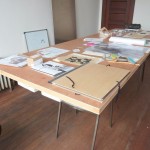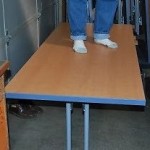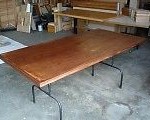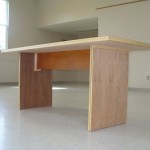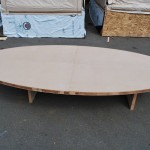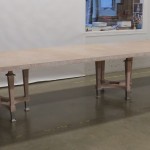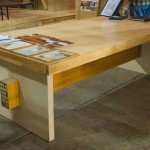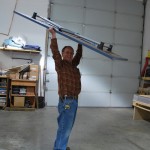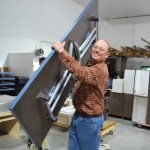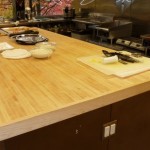Sing Along With American Made Lightweight Tables
By Damon Marturion
Using Sing Core technology, the structural integrity of any table can be magnified exponentially while remaining extremely lightweight.
Inventor, Peter Sing, says, “There is nothing like this in the world that is eco-friendly lightweight, strong and stronger than titanium; plus,” says Sing, “We help put American craftsmen back to work building products that are handmade in the USA and will last the test of time, while making the world a better place.”
I met with Mr. Sing in his international headquarters in McCleary, Washington. Many emerging technologies have been birthed in the Pacific Northwest and Sing’s, patented “Sing Core” is destined to provide a natural and bio-friendly alternative to existing building materials.
Mr. Sing gave me a tour through his warehouse where I viewed a variety of table designs. They covered the entire spectrum from industrial work-tables, to kitchen tables, desktop and coffee-tables. Pretty much, any kind of table you could think of.
Of course, Mr. Sing is enthusiastic about his own products but he really got my attention when he lifted the whole end of an eight foot table with one finger. I thought, “That doesn’t make sense… How’d he do that?” as if it were been some parlor-trick or something… Then he challenges me to try it… and sure enough, it was so lightweight that I could duplicate the demonstration with one finger.
Mr. Sing claimed that though extremely lightweight, that his sing core was stronger than titanium. Sing explains, “Compared to an average size of grid for honeycomb core made of aluminum, titanium and plastic that are less than 1/2 inches, keeping an adequate strength is an issue. Sing core’s internal structure is made of renewable natural wood veneer that is so strong that 2 x 2 inch grids of sing core reached 660 psi when tested by UW Civil Engineering Lab, proving that it is stronger than almost any available honeycomb core.” I thought this was an optimistic appraisal, until he crawled onto this 8 foot table that was only one-inch thick and laid on it as if he was going to take a nap. Then he asked me if I could witness any visible bowing of the table top beneath him. Sure enough, to my naked eye, the table top was perfectly straight.
Not being an engineer, I could not explain what my eyes were seeing, but it confused my reality of what seemed possible and/or my interpretation of the laws of physics as I understood them.
Getting off of the table, he explained to me that while I was looking at tables covered in a variety of material, like Formica (HPL), natural woods and metal; his technology could be applied to any covering resulting in a lightweight, strong and long-lasting end product using no melamine or particle board. Examples included any surface material, “Like any kind of wood product, concrete, any stone – like granite – for instance, acrylics, glass, or even Kevlar for bullet-proof solutions.”
“Try to bend it,” Mr. Sing encourages me to bang, press and sit on the table to challenge its structural integrity, “You can’t. It’s too strong.”
Then turning his hand from horizontal to vertical, he said, “And any table top you see here can be turned to stand, like this, and it becomes a door,” with the same properties, just different hardware and packaging, “or any other thing. It’s the same core material.”
Mr. Sing said that his manufacturing facility was most famous for providing lightweight and “true flat” solutions for oversize doors. He said that this is a common problem for designers and architects as, “The reason most wood products fail is due to warping, twisting and cupping.
As we walked through a maze of assorted furniture, it was obvious to me that Peter Sing’s sing core could be used in nearly any consumer product, as well as structural applications; everything from cutting boards to bridges.
Then he hit me with his philanthropic dream of making the world a better place by putting the power of product design and manufacturing back in the hands of the average American who has (at least) basic woodworking skills. Sing says this is a, “New miracle revolution of true green technology.”
To this end, Mr. Sing has launched his, “Lightweight University,” where he trains and certifies pioneers (anyone from one-man operations to large, corporate manufacturing facilities) in the practical use of his sing core. He went on to say, “Every student, every draftsman, artist, designer or housewife can use sing core to create thousands of product applications if they attend Lightweight University , at least they could benefit by using products made of sing core in their daily lives.”
“Anyone can design,” sing core products, according to Sing. When people come to him with ideas, he empowers them with his technology, allowing them to create things that have never existed before; and if they so desire, supports them as they manufacture their designs and gain market share via Lightweight University (LWU).
Inventor, Peter Sing, says, “This should be in every house in America,” encouraging everyone to, “spread the news… tell your family and friends,” about sing core and his desire to put the power of manufacturing back, “in the hands of American craftsmen,” who can create high-quality, handmade creations that will last for lifetimes, while still being economical enough to compete with cheap (disposable) imports; returning pride to the phrase, “Made in the USA.”
For more information, contact:
Peter Sing at Sing Core, P.O. Box 1691, McCleary, WA 98557 (360) 495-3577
- Lightweight , high strenght folding table
- High precison non warp desk
- True Flat 25 ft. Table

